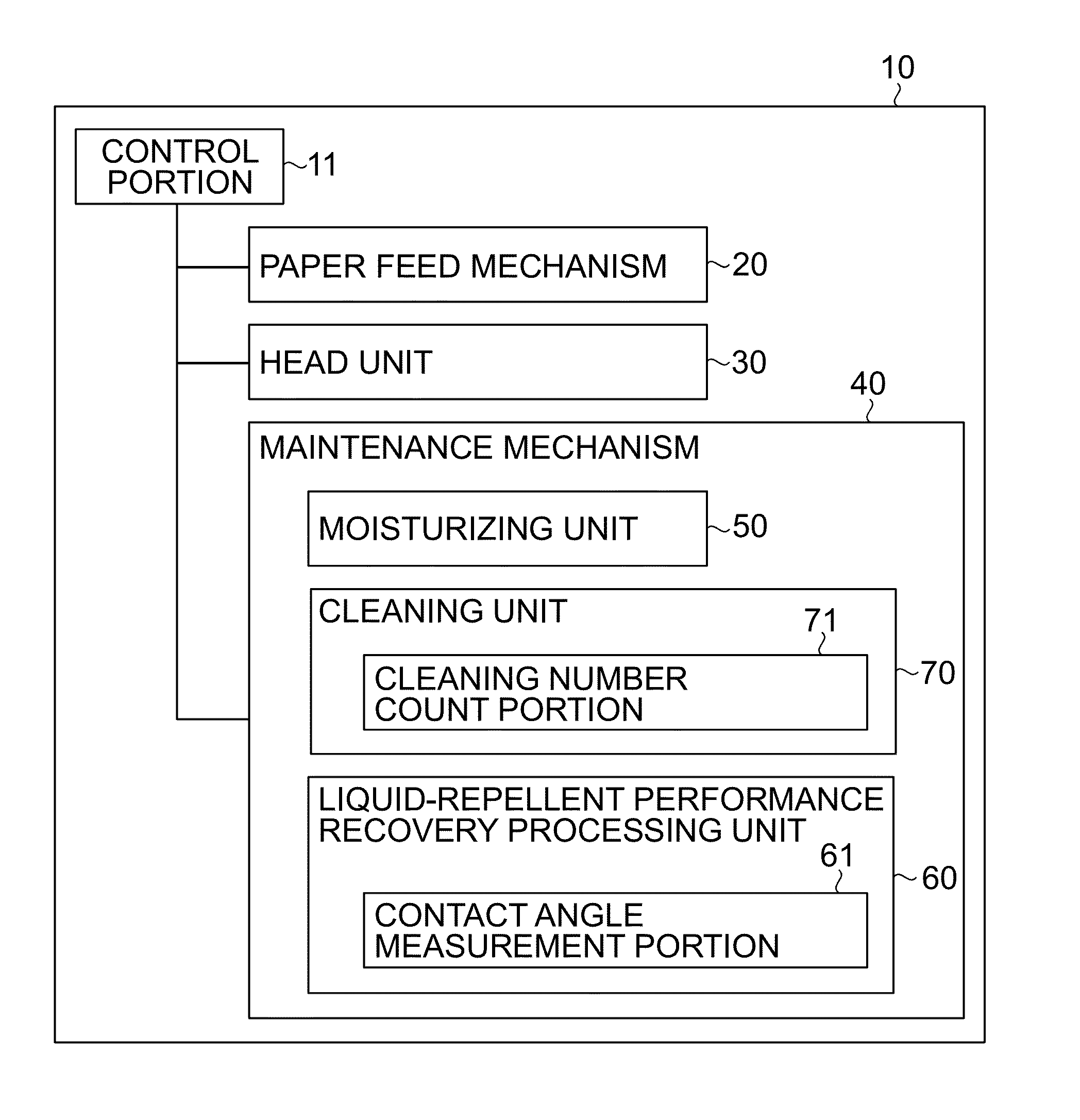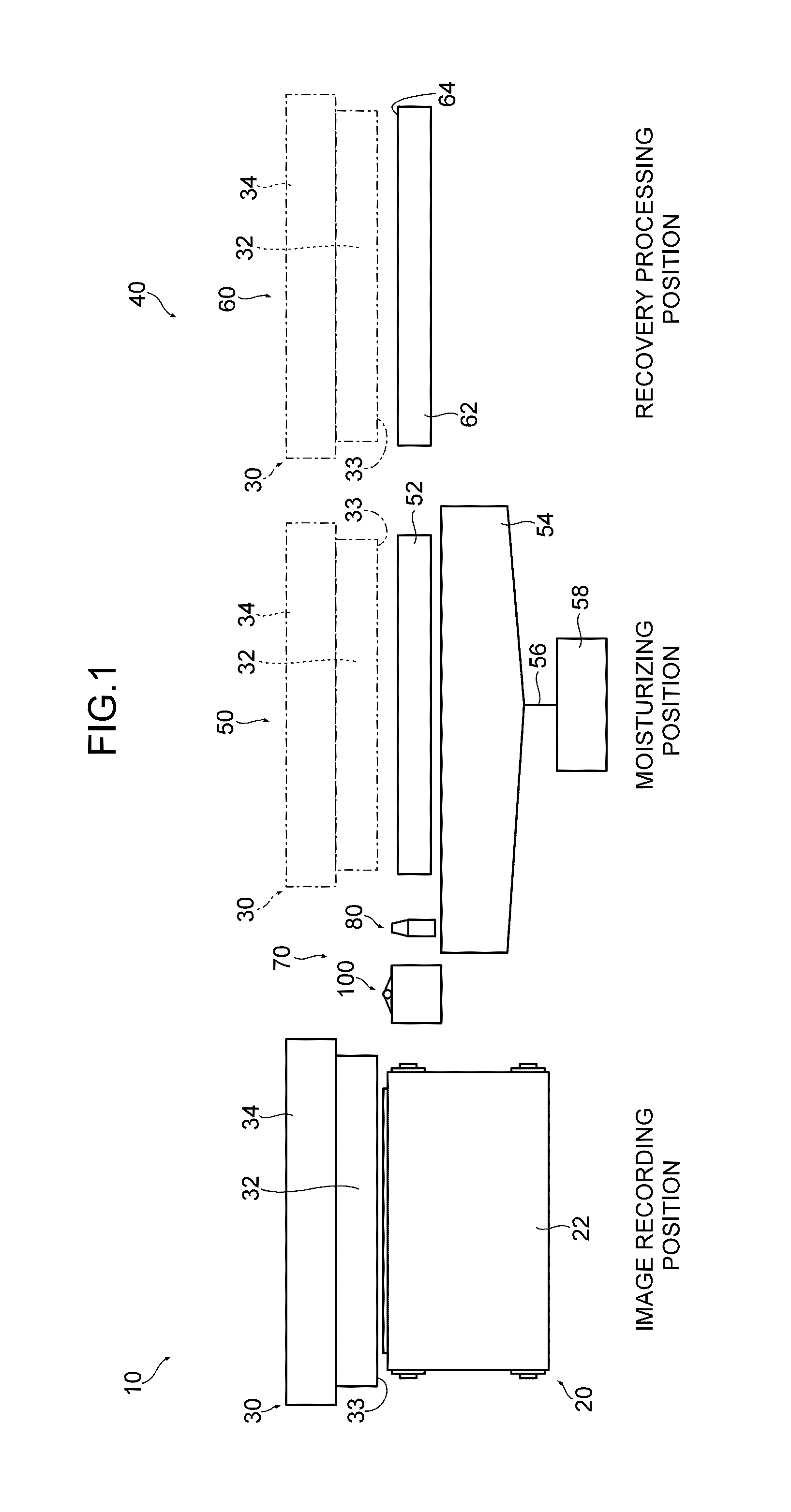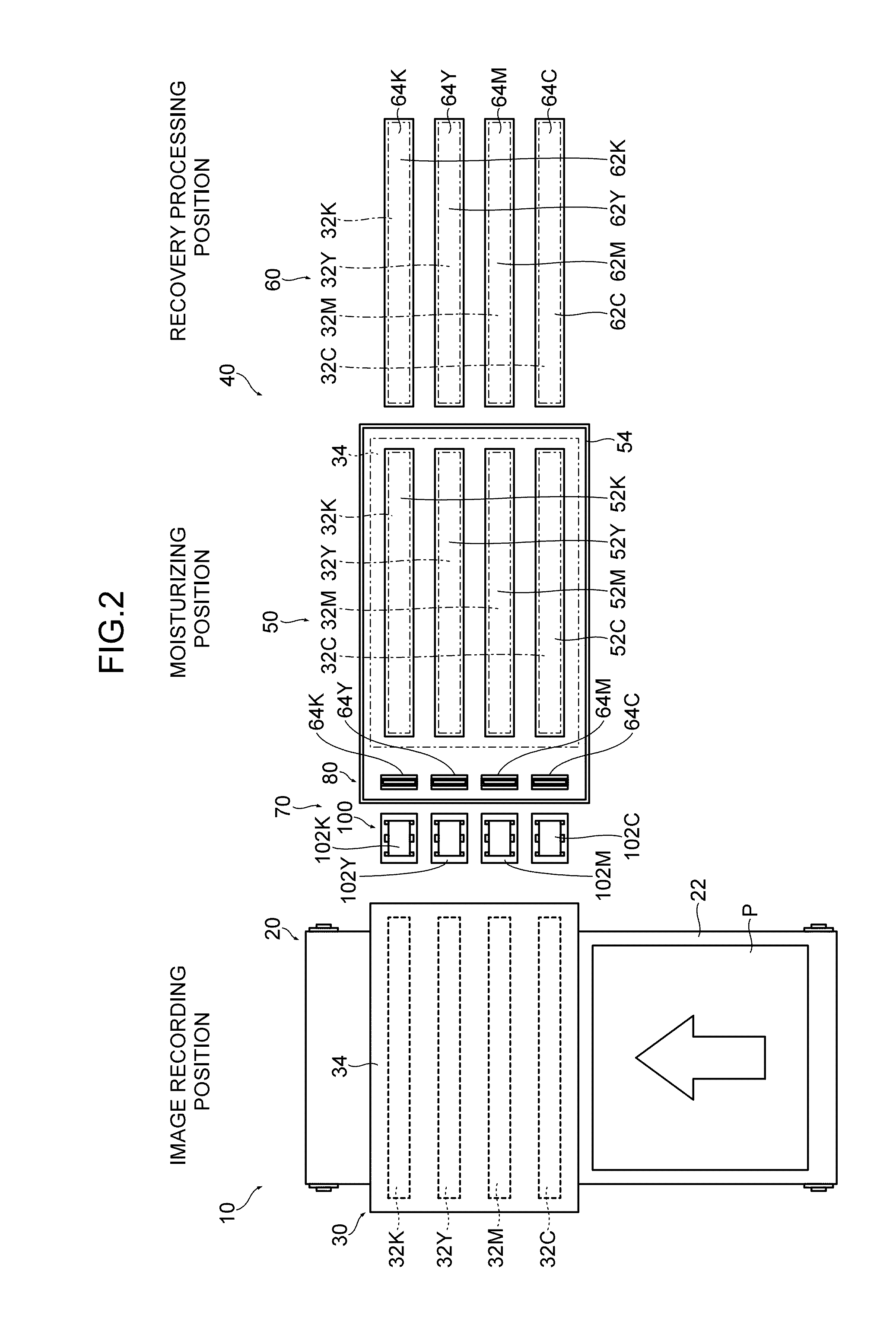Inkjet recording device and method for maintaining same
a recording device and a technology for maintaining the same, applied in printing and other directions, can solve the problems of difficult uniform application of liquid-repellent agent onto the nozzle surface, inability to completely suppress wearout, and inability to secure stable liquid-repellent performance, etc., to achieve the effect of stabilizing the liquid-repellent performan
- Summary
- Abstract
- Description
- Claims
- Application Information
AI Technical Summary
Benefits of technology
Problems solved by technology
Method used
Image
Examples
first example
[0183]First, an experiment was conducted to confirm the recovery of the liquid-repellent performance on the surface of the liquid-repellent film by heating.
[0184]The experiment was conducted by forming a liquid-repellent film on a silicon substrate using CYTOP (registered trademark) that is an amorphous fluorine resin, measuring the contact angle of ink (surface tension is 30 mN / m) with respect to an unused liquid-repellent film surface, measuring the contact angle of ink with respect to the liquid-repellent film surface after cleaning is performed 1000 times, and measuring the contact angle of ink with respect to the liquid-repellent film surface after the liquid-repellent performance recovery processing is performed on the liquid-repellent film that has been cleaned 1000 times. The liquid-repellent performance recovery processing was performed several times while changing the heating temperature to 80 degrees Celsius, 90 degrees Celsius, 100 degrees Celsius, 120 degrees Celsius an...
second example
[0186]Next, an experiment was conducted to confirm the transformation condition of the liquid-repellent film by heating.
[0187]The experiment was conducted by forming a grid pattern film on the silicon substrate using CYTOP (registered trademark) that is an amorphous fluorine resin, and confirming the transformation of the pattern when the film is heated while changing the temperature.
[0188]The heating temperature is assumed to be 100 degrees Celsius, 120 degrees Celsius and 180 degrees Celsius, and the heating time is assumed to be 60 seconds.
[0189]FIG. 12 illustrates an image of an unheated film observed by a scanning electron microscope (SEM) and a SEM image of the film after being heated at each temperature, where the upper part illustrates SEM images of the film surface and the lower part illustrates SEM images of the film cross-sectional surface.
[0190]As illustrated in FIG. 12, although the film cross-sectional surface is anisotropic (rectangle) in the unheated film, the corner...
PUM
 Login to View More
Login to View More Abstract
Description
Claims
Application Information
 Login to View More
Login to View More - R&D
- Intellectual Property
- Life Sciences
- Materials
- Tech Scout
- Unparalleled Data Quality
- Higher Quality Content
- 60% Fewer Hallucinations
Browse by: Latest US Patents, China's latest patents, Technical Efficacy Thesaurus, Application Domain, Technology Topic, Popular Technical Reports.
© 2025 PatSnap. All rights reserved.Legal|Privacy policy|Modern Slavery Act Transparency Statement|Sitemap|About US| Contact US: help@patsnap.com



